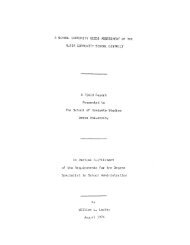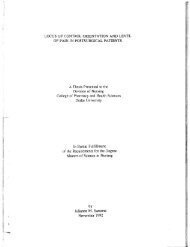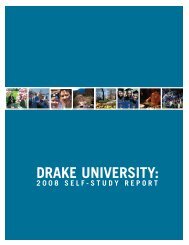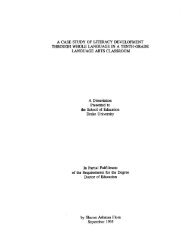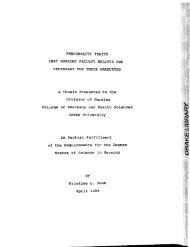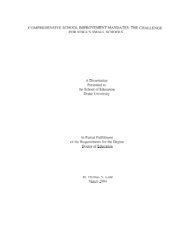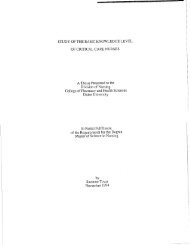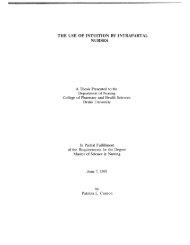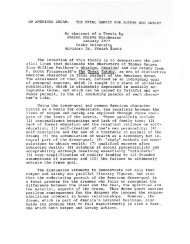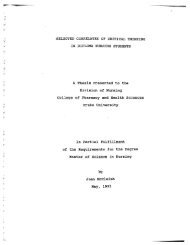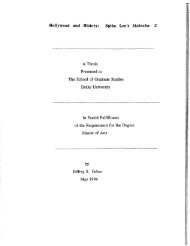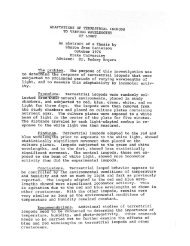LEADERSHIP CHARACTERISTICS OF ... - Drake University
LEADERSHIP CHARACTERISTICS OF ... - Drake University
LEADERSHIP CHARACTERISTICS OF ... - Drake University
You also want an ePaper? Increase the reach of your titles
YUMPU automatically turns print PDFs into web optimized ePapers that Google loves.
Table 17<br />
Gender Differences Related to Extra Effort, Effectiveness, and Satisfaction<br />
of the Raters<br />
Gender N Mean Std. Std. Error<br />
Deviation Mean df t P<br />
Extra Effort Female 14 3.32 .42807 .I 1441 25.52 1.742 .094<br />
Effectiveness Female 14 3.67 .31116 .Of3316 39.35 1.979 .055<br />
Male 44 3.44 ,54066 .08245<br />
Satisfaction Female 14 3.66 .31484 .08415 40.08 2.586 .013<br />
Male 44 3.35 55679 .08491<br />
Gender impact was also measured relative to the perception of the<br />
rater. An independent-sample T test indicated that the homogeneity of<br />
variance showed that variances were not equal with all raters (Table 18).<br />
Specifically, subordinate raters differed significantly in how they rated<br />
males and females relative to leadership styles and outcomes. Female<br />
leaders were viewed as more transformational by their subordinates and<br />
less passive-avoidant than were male leaders. These findings, while<br />
statistically significant, offered little practical variability in scores.



